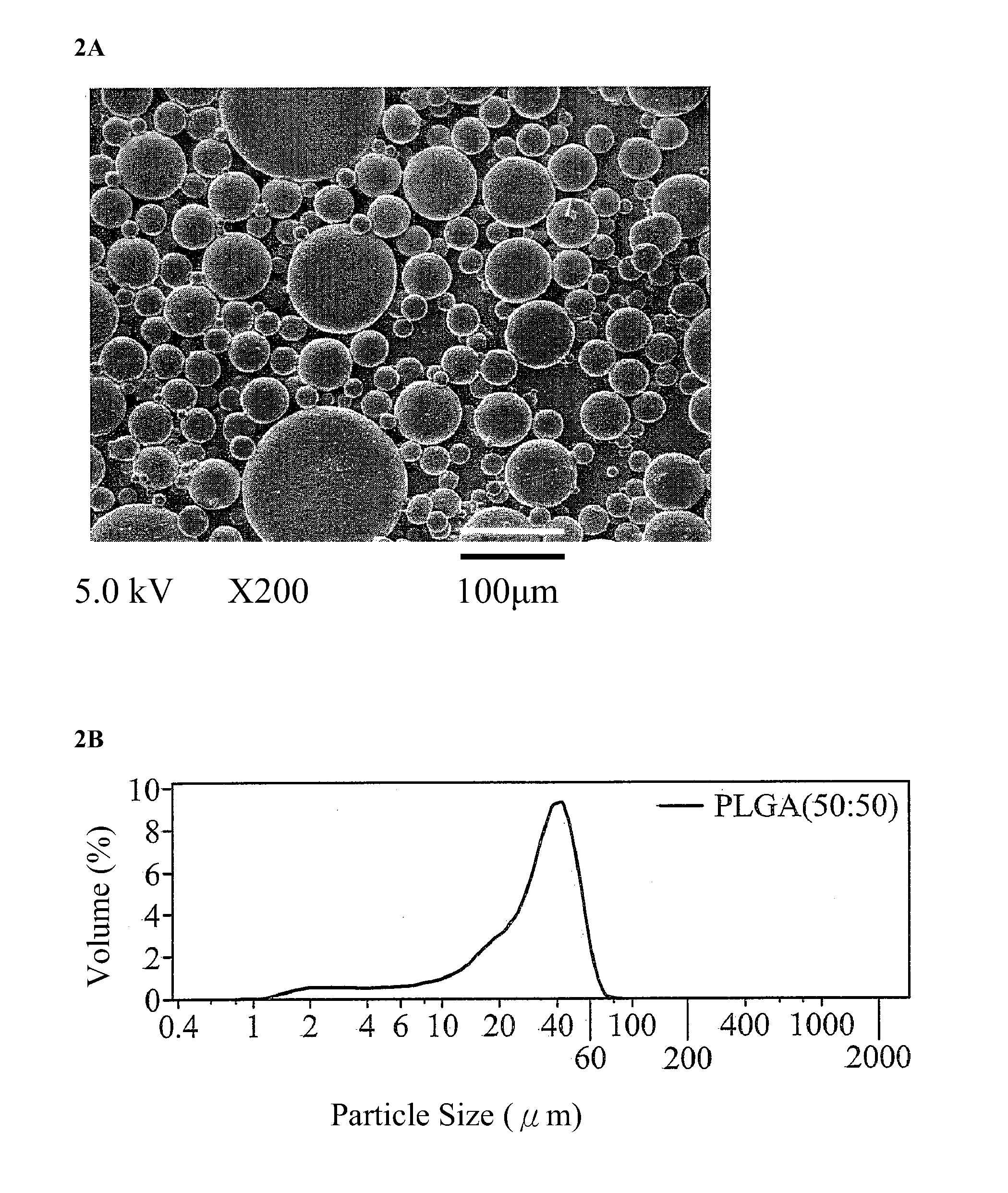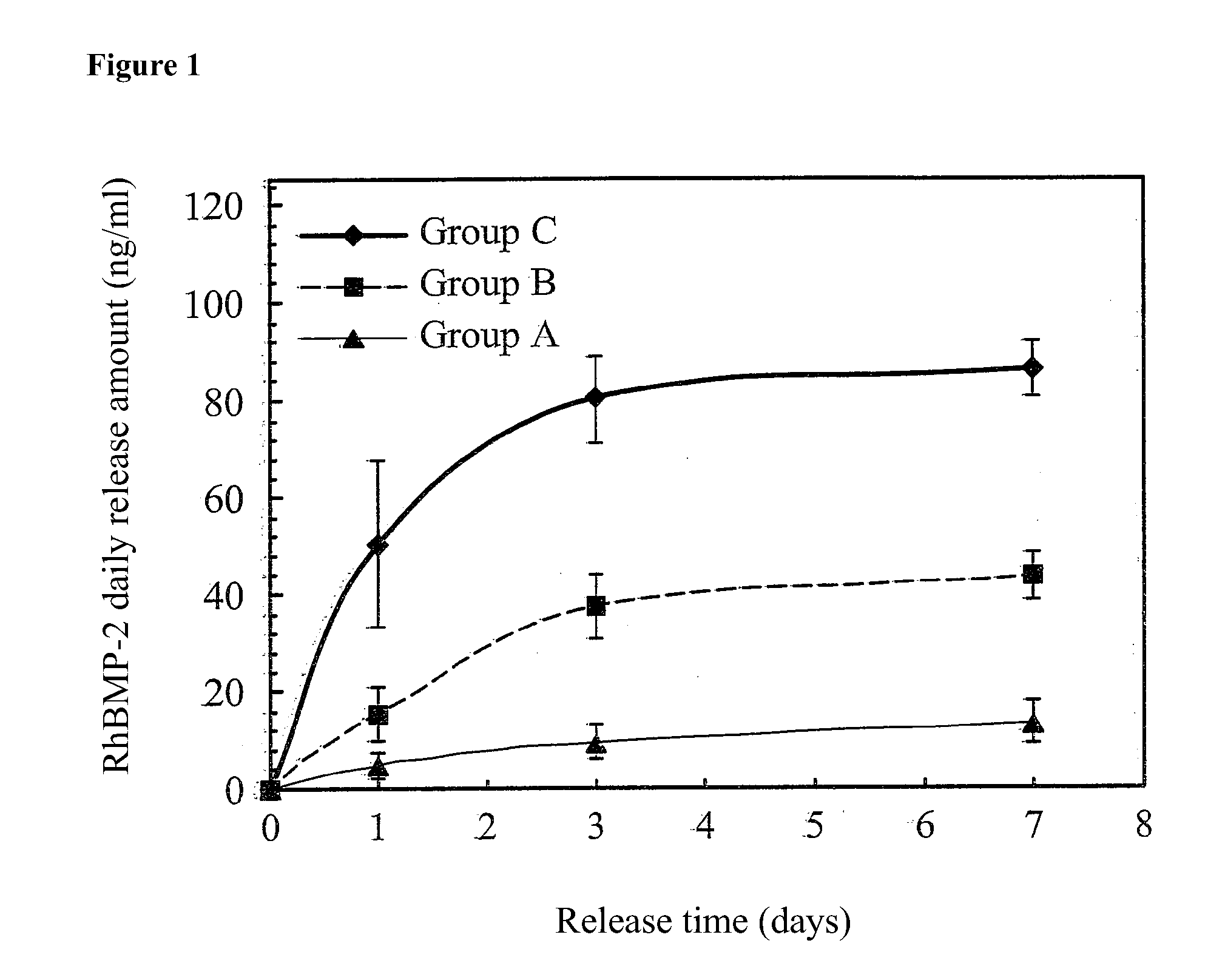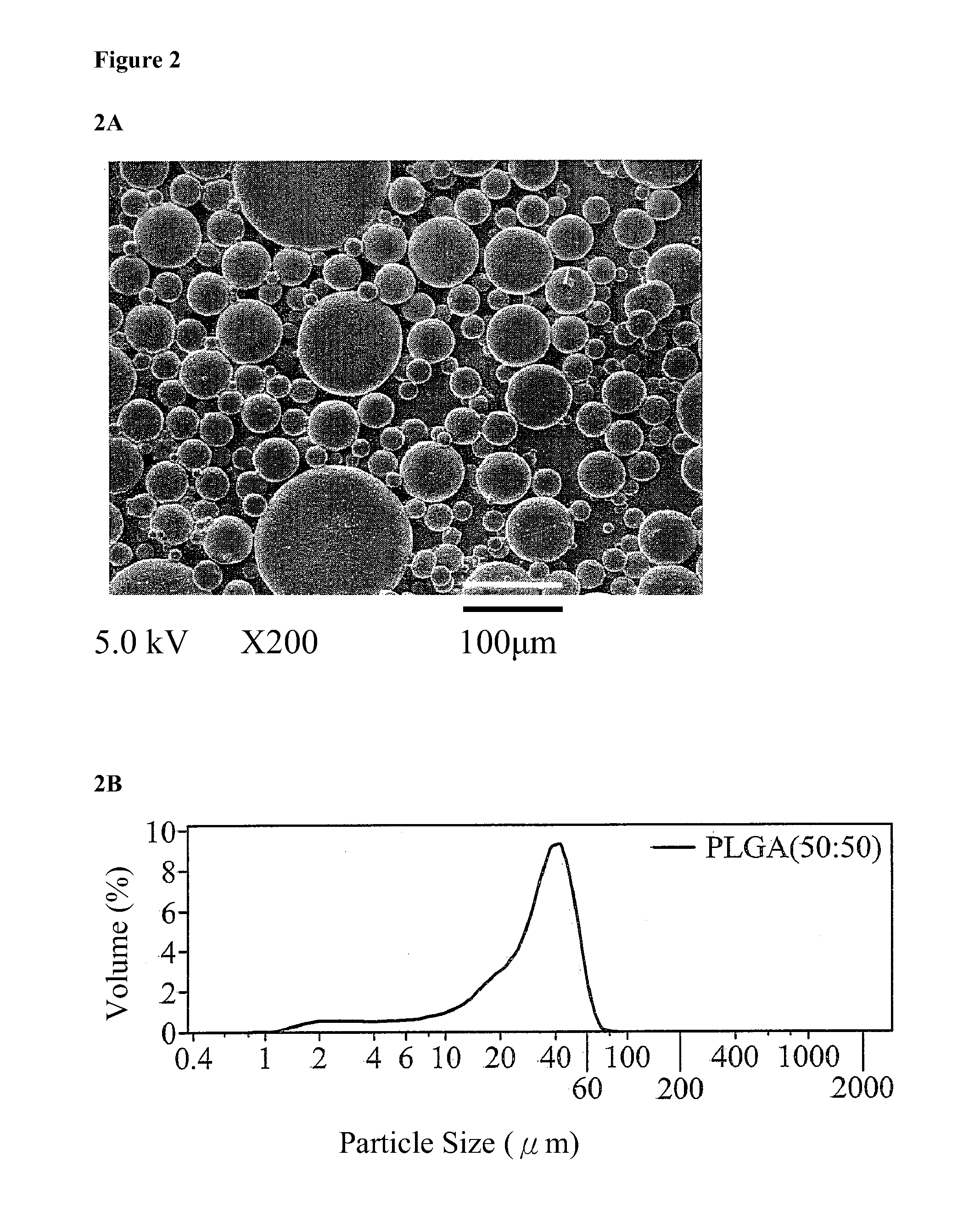Sustained Release Systems and Preparation Method Thereof
a technology of sustained release and release system, which is applied in the direction of peptide/protein ingredients, drug compositions, peptides, etc., can solve the problems of not being able to apply hydrophilic drugs, affecting the activity of protein drugs, and not being able to uniformly disperse solid protein drugs in organic solvents
- Summary
- Abstract
- Description
- Claims
- Application Information
AI Technical Summary
Benefits of technology
Problems solved by technology
Method used
Image
Examples
example
Example 1
Preparation of the Controlled Release System (1) (Double Emulsion Method / Basic Substance / Hydrophilic Drug)
[0030]8 mg of hydroxyapatite (HAp) powder and 2,500 ng of recombinant human bone morphogenetic protein-2 (rhBMP-2) were added to 250 μl of a PBS buffer solution and shaken with a shaker for 5 minutes to form a first aqueous solution (rhBMP-2 / HAp / PBS). 0.25 g of PLGA65 / 35 was dissolved in 2.5 ml of dichloromethane to form a 10% PLGA solution. The first aqueous solution (rhBMP-2 / HAp / PBS) and the 10% PLGA solution were mixed and stirred at 1,000 rpm for 15 minutes to form a first emulsion (w / o). The first emulsion was added to 10 ml of a 0.1% (w / v) polyvinyl alcohol (PVA) second aqueous solution and stirred at 500 rpm for 5 minutes to form a second emulsion (w / o / w). The second emulsion was continuously stirred for 4 hours and then left standing for one minute. An upper layer thereof was collected. A centrifugal lower layer was collected by centrifugation of the upper layer...
example 2
Preparation of the Controlled Release System (2) (Double Emulsion Method / Coating / Hydrophilic Drug)
[0031]250 μl of a PBS buffer solution was shaken with a shaker for 5 minutes to form a PBS first aqueous solution. 0.25 g of PLGA65 / 35 was dissolved in 2.5 ml of dichloromethane to form a 10% PLGA solution. The PBS first aqueous solution and the 10% PLGA solution were mixed and stirred at 1,000 rpm for 15 minutes to form a first emulsion (w / o). The first emulsion was added to 10 ml of a 0.1% (w / v) polyvinyl alcohol (PVA) second aqueous solution and stirred at 500 rpm for 5 minutes to form a second emulsion (w / o / w). The second emulsion was continuously stirred for 4 hours and then left standing for one minute. An upper layer thereof was collected. A centrifugal lower layer was collected by centrifugation of the upper layer at 3,000 rpm for 5 minutes. The original and centrifugal lower layers were washed with 10 ml of secondary water for one minute. After centrifugation and washing twice,...
example 3
Preparation of the Controlled Release System (3) (Double Emulsion Method / Coating / Basic Substance / Hydrophilic Drug)
[0032]250 μl of a PBS buffer solution was shaken with a shaker for 5 minutes to form a PBS first aqueous solution. 0.25 g of PLGA65 / 35 was dissolved in 2.5 ml of dichloromethane to form a 10% PLGA solution. The PBS first aqueous solution and the 10% PLGA solution were mixed and stirred at 1,000 rpm for 15 minutes to form a first emulsion (w / o). The first emulsion was added to 10 ml of a 0.1% (w / v) polyvinyl alcohol (PVA) second aqueous solution and stirred at 500 rpm for 5 minutes to form a second emulsion (w / o / w). The second emulsion was continuously stirred for 4 hours and then left standing for one minute. An upper layer thereof was collected. A centrifugal lower layer was collected by centrifugation of the upper layer at 3,000 rpm for 5 minutes. The original and centrifugal lower layers were washed with 10 ml of secondary water for one minute. After centrifugation an...
PUM
| Property | Measurement | Unit |
|---|---|---|
| particle size | aaaaa | aaaaa |
| size | aaaaa | aaaaa |
| diameter distribution | aaaaa | aaaaa |
Abstract
Description
Claims
Application Information
 Login to View More
Login to View More - R&D
- Intellectual Property
- Life Sciences
- Materials
- Tech Scout
- Unparalleled Data Quality
- Higher Quality Content
- 60% Fewer Hallucinations
Browse by: Latest US Patents, China's latest patents, Technical Efficacy Thesaurus, Application Domain, Technology Topic, Popular Technical Reports.
© 2025 PatSnap. All rights reserved.Legal|Privacy policy|Modern Slavery Act Transparency Statement|Sitemap|About US| Contact US: help@patsnap.com



